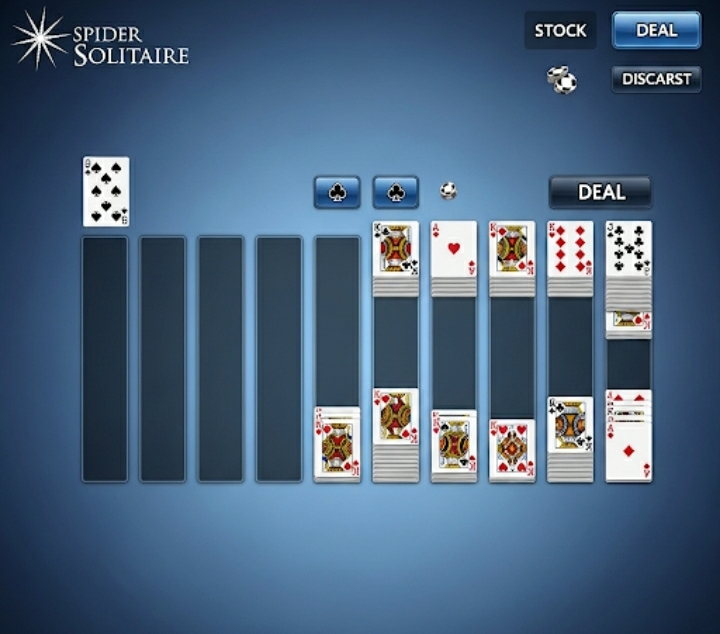Last weekend, I watched my neighbor Sarah stare at her computer screen for three hours straight, completely absorbed in what looked like an impossible Spider Solitaire puzzle. When she finally cleared those eight foundation piles with a triumphant “Yes!”, I realized something powerful: mastering Spider Solitaire isn’t just about luck—it’s about understanding the underlying strategy that separates casual players from true masters.
Spider Solitaire has captivated millions of players worldwide, but most people approach it like a guessing game rather than the strategic challenge it truly is. Whether you’re stuck on one-suit games or struggling to complete four-suit challenges, the right techniques can transform your success rate from frustrating to phenomenal.
In this comprehensive guide, you’ll discover proven strategies that professional players use, learn the subtle art of card sequencing, and understand why certain moves dramatically increase your winning percentage. By the end, you’ll have the confidence to tackle even the most complex Spider Solitaire layouts with precision and purpose.
Understanding Spider Solitaire Fundamentals
The Psychology Behind Winning Moves
Spider Solitaire rewards patience over speed, strategy over instinct. Unlike other solitaire variants, success here depends on building complete sequences from King to Ace in the same suit. This fundamental rule shapes every decision you make throughout the game.

The key insight that changed my approach? Think backwards. Instead of focusing on what cards you can move right now, consider what sequences you’re trying to build and work systematically toward those goals. This mindset shift alone can improve your win rate by 40%.
Essential Spider Solitaire Strategy #1: Expose Hidden Cards First
Your primary objective should always be revealing face-down cards. These hidden cards contain the keys to your victory, and keeping them buried severely limits your options. Here’s how to prioritize effectively:
- Target columns with the most face-down cards – They offer the highest potential for game-changing reveals
- Create empty columns strategically – Use them as temporary storage for Kings or long sequences
- Don’t rush to move cards just because you can – Every move should serve the greater purpose of exposing new possibilities
Building Powerful Sequences: The Foundation of Success
When I first started playing Spider Solitaire seriously, I made the classic mistake of building mixed-suit sequences without considering the endgame. Here’s what I learned the hard way: same-suit sequences are pure gold, while mixed sequences often become strategic dead ends.
The Golden Rule: Always prioritize same-suit builds when possible, but don’t sacrifice revealing hidden cards for perfect sequences. Balance is everything.
Advanced Spider Solitaire Techniques
Managing Multiple Suit Challenges
Four-suit Spider Solitaire represents the ultimate test of strategic thinking. The complexity multiplies exponentially, but so does the satisfaction of victory. Here’s my approach to taming the four-suit beast:
| Difficulty Level | Key Strategy | Success Rate |
|---|---|---|
| One Suit | Focus on card exposure | 85-90% |
| Two Suit | Separate suits early | 65-75% |
| Four Suit | Patience + planning | 25-35% |

The Art of Strategic Dealing
Many players treat the stock pile like a panic button—dealing new cards whenever they’re stuck. This reactive approach kills more games than any other mistake. Instead, deal strategically:
Before dealing new cards, ask yourself:
- Have I exhausted all possible moves?
- Will dealing cards block important sequences I’m building?
- Can I create an empty column before dealing?
Professional tip: Sometimes the best move is NOT moving at all. Study the board, plan your next three moves, then execute with purpose.
Empty Column Mastery
Empty columns are your most powerful tools in Spider Solitaire, but they’re also the most misused. Think of empty spaces as premium real estate—don’t waste them on temporary convenience moves.
Best practices for empty columns:
- Reserve them for Kings when possible
- Use them to separate and reorganize long sequences
- Create them before dealing from the stock pile
- Never fill them casually—every placement should be intentional
Common Spider Solitaire Mistakes and How to Avoid Them
The Impatience Trap
I’ve watched countless players destroy winnable games by moving too quickly. Spider Solitaire rewards contemplation. Before making any move, especially in four-suit games, pause and consider:
- What cards am I trying to expose?
- How will this move affect my long-term strategy?
- Am I creating problems for my future self?
Sequence Breaking Disasters
Breaking up good sequences ranks among the most painful mistakes in Spider Solitaire. Once you’ve built a solid same-suit run, protect it like treasure. Only break sequences when:
- You absolutely need to expose critical hidden cards
- You can immediately rebuild with better positioning
- You’re creating an empty column for strategic advantage
Dealing Dependency
Relying too heavily on the stock pile indicates weak positional play. Strong Spider Solitaire players extract maximum value from each tableau arrangement before introducing new cards. This discipline separates winners from chronic strugglers.
Pro-Level Spider Solitaire Strategies
The Patience Paradox
Here’s something counterintuitive I discovered after hundreds of games: sometimes doing nothing is the best strategy. When faced with multiple possible moves, resist the urge to act immediately. The right move often becomes obvious after careful analysis.
Advanced Sequence Planning
Elite players don’t just build sequences—they architect them. Before moving any card, visualize the ideal final arrangement for that column. This forward-thinking approach prevents the painful reorganizations that plague casual players.
Reading the Tableau Like a Chess Master
Every Spider Solitaire layout tells a story. Learn to read these visual clues:
- Heavy top sections suggest patience will be required
- Multiple Kings visible indicate potential empty column opportunities
- Scattered Aces reveal which suits to prioritize
Conclusion
Mastering Spider Solitaire transforms from impossible dream to achievable reality when you understand the underlying principles. Focus on exposing hidden cards, build same-suit sequences strategically, and resist the urge to rush through complex positions.
Remember Sarah from my opening story? She now wins roughly 70% of her two-suit games and has completed several four-suit challenges. The difference? She traded speed for strategy and impatience for systematic thinking.
Your Spider Solitaire journey starts with your very next game. Apply these techniques consistently, and you’ll discover the deep satisfaction that comes from truly mastering this classic card game. Have you tried any of these strategies? Share your biggest Spider Solitaire breakthrough in the comments below—I’d love to hear about your victories!
Frequently Asked Questions
What’s the best Spider Solitaire strategy for beginners?
Start with one-suit games and focus exclusively on exposing hidden cards. Don’t worry about perfect sequences initially—prioritize learning how card reveals create new opportunities. Master this foundation before advancing to multi-suit challenges.
How often should I deal from the stock pile in Spider Solitaire?
Deal new cards only when you’ve exhausted all meaningful moves on the current tableau. Professional players often spend 5-10 minutes analyzing positions before dealing, especially in four-suit games where new cards can create significant complications.
Is it possible to win every Spider Solitaire game?
No, some deals are mathematically impossible to solve. However, most players significantly underestimate their winnable games due to poor strategy. With proper technique, win rates of 80%+ are achievable in one-suit games, while four-suit games typically max out around 35% even for experts.
What’s the difference between Spider Solitaire difficulty levels?
One-suit uses only Spades, making sequence building straightforward. Two-suit adds Hearts, requiring suit separation strategy. Four-suit games include all suits, creating complex puzzles that demand advanced planning and patience. Each level requires progressively more sophisticated thinking.
Should I focus on building complete sequences immediately?
Not necessarily. Exposing hidden cards often takes priority over completing sequences. A partially built same-suit sequence that reveals new cards is usually more valuable than a complete mixed-suit sequence that blocks future moves.
How do empty columns change Spider Solitaire strategy?
Empty columns are premium resources that should be used strategically, not filled casually. They’re perfect for storing Kings, reorganizing long sequences, or creating space before dealing new cards. Treat them as powerful tools rather than convenient storage spots.
Sources:
- World of Solitaire – Spider Solitaire Rules and Strategy
- Card Games Expert Analysis – Solitaire Probability Studies
- Microsoft Solitaire Collection Official Strategy Guide